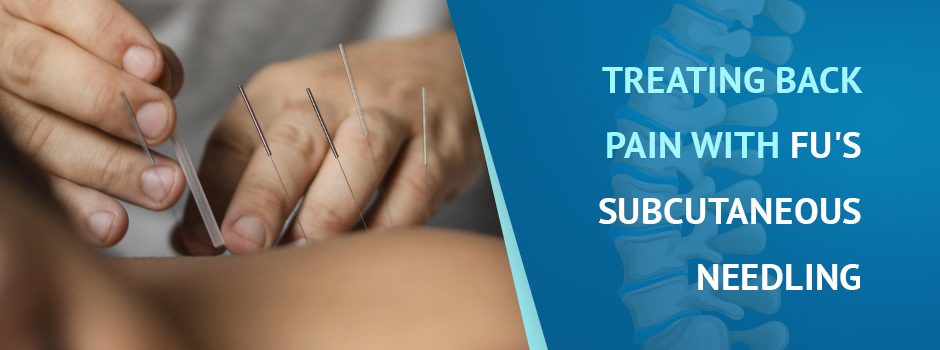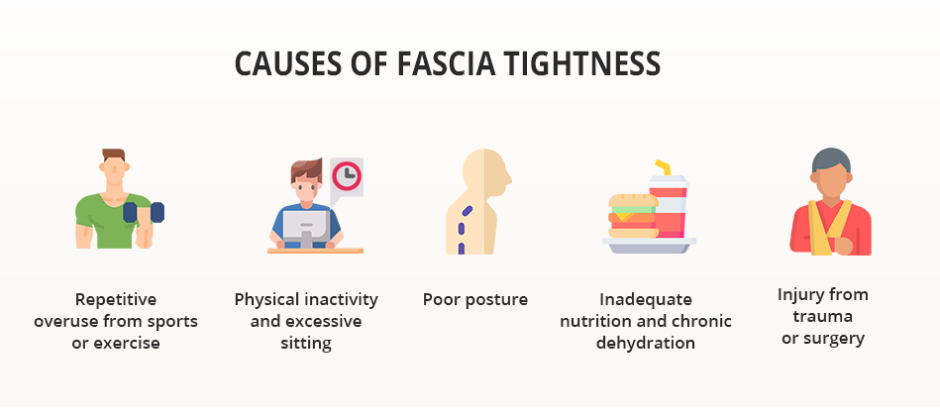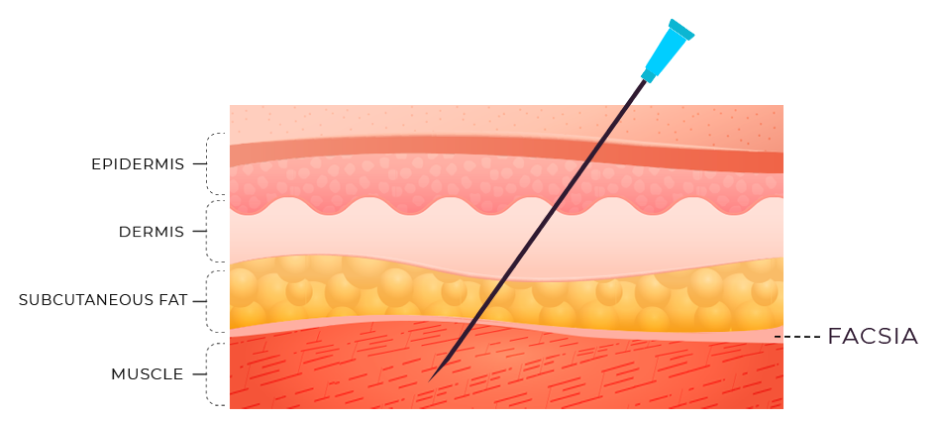Many people, including medical doctors, address joint and muscle pain by zeroing in on the locus of pain. But musculoskeletal pain is often caused by tightness in the fascia, the network of connective tissue that integrates structures throughout the body. Tight fascia are often located far away from the painful area, making standard treatments a waste of time and money. When traditional back pain treatments fail to resolve chronic pain, surgery is often the next step, putting the patient at risk with no guarantee of successful outcomes.
Learn about the body’s network of fascia, and how Fu’s subcutaneous needling (FSN) can be an effective alternative back pain treatment.
Fascia is a thin tough sheath of connective tissue that encases and surrounds your muscles, organs, nerves, blood vessels and bones, integrating your systems in a way that provides structural integrity. Despite its toughness, fascia is highly innervated, making it sensitive to stress, with a stretch reflex that causes it to tighten up in response to excess loading.
Fascia is made up of layers of cells with a liquid called hyaluronan in between. Facial tissue is highly elastic, stretching and retracting as the body moves to provide dynamic stability. However, hyaluronan can dry up, making the fascia sticky and inelastic, and causing facial adhesions that reduce overall mobility. Sometimes painful knots — called myofascial trigger points — can develop, contributing to pain.
Causes of fascia tightness include:
Repetitive overuse from sports or exercise
Physical inactivity and excessive sitting
Poor posture
Inadequate nutrition and chronic dehydration
Injury from trauma or surgery
Tight fascia can pull your body out of alignment, placing stress on joints, muscles and connective tissue. Prolonged fascial tightness can cause chronic pain in affected tissues anywhere along the kinetic chain. For example, low back pain can be caused by tight fascia surrounding the abdominal muscles, hip flexors and diaphragm, or muscles deep within the pelvic bowl.
Sadly, traditional medical practitioners seldom examine tissues beyond the locus of pain. In fact, some insurance providers will not compensate doctors who use alternative treatments for back pain that do not focus on the area of pain itself.
Fu’s Subcutaneous Needling is considered a modern form of acupuncture. FSN targets the fascia to evoke a change in fascia tightness, thus relieving pain and tension in structures further along the kinetic chain. By inserting a needle directly into the fascia and manipulating it, fibers are stretched and realigned, and fascial tension is released.
Back pain often arises from compression or entrapment of the sciatic nerve. Chronic sitting and sedentary lifestyle behaviors cause the hip flexors to become tight while compressing the diaphragm and abdominal muscles. Because the lower back muscles — particularly the quadratus lumborum — rest along the same fascia path as the abdominals, diaphragm and psoas, pain is often referred to the low back.
The FSN procedure takes only several minutes to manipulate the needle and evoke positive changes in fascial tension. The patient often experiences immediate pain relief and improved mobility. FSN is often used in conjunction with other treatment modalities to resolve lower back pain.
The back pain specialists at NYDNRehab use a variety of alternative treatments for back pain, including Fu’s subcutaneous needling. Our clinical director, Dr. Lev Kalika, is an expert in ultrasound guided procedures using the highest resolution ultrasonography available. Ultrasound lets us visualize the fascia during needling procedures, to accurately target tight tissues and confirm the procedure’s efficacy.
FSN is just one of several back pain treatments available to our patients, and rarely found in run-of-the-mill physical therapy clinics. Other treatment modalities include:
Ultrasound guided dry needling
Extracorporeal shock wave therapy (ESWT)
Posture retraining
Gait analysis and retraining
Regenerative therapies
Physical therapy
Our personalized one-on-one approach to patient care means your back pain treatment plan will be custom-designed specifically for you. Contact NYDNRehab today, and learn how our chronic back pain alternative treatments can quickly relieve your pain and restore functional mobility.
Resource
Fu, Zhonghua, and Ryan Shepherd. “Fu’s Subcutaneous Needling, a Modern Style of Ancient Acupuncture?.” Acupuncture in Modern Medicine (2013).
Wilke, Jan, et al. “The lumbodorsal fascia as a potential source of low back pain: a narrative review.” BioMed research international 2017 (2017).

























































